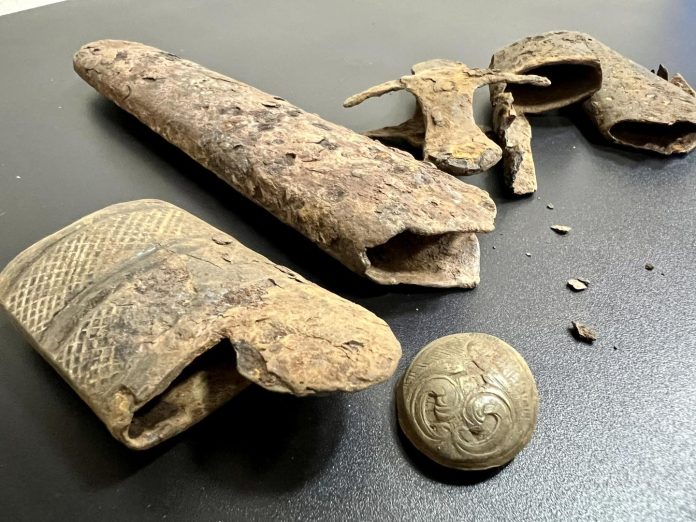Archaeologists made an important discovery on the somlo hill, extinct volcano in the west of Hungary, which found more than 900 metal artifacts dating from the period more than 3000 years ago. These findings give a unique opportunity to re-evaluate the transition period between the late bronze and early iron era in Central Europe.
The Somlo Hill, which is part of the Vespram Committee, is known for its vineyards, but archaeologists have now confirmed its important role as a ritual and administrative center in the late bronze and early iron era. Research under the guidance of Archaeologist Benza Soosh from the Hungarian National Museum, conducted using modern methods, such as laser scanning, magnetic reconnaissance, metallodetecture and ground examinations, showed that the found treasures contain not only ordinary jewelry, but also rare military distinctions and even alpis.
Six treasures were discovered on the southeastern hill plateau, five of them belong to the late bronze era and one to the early iron. In particular, two hiding places, the third and fifth, were particularly unique, as artifacts were hidden in ceramic vessels. This was the first confirmation of such a rite in the region, and researchers used computed tomography to study the internal structure of warehouses.
Another interesting find was the fifth treasure, which included not only metals, but also amber beads, eggs of pigs and boars, fragments of fabrics and skin. These objects indicate the ritual nature of the hiding place and are the first evidence of the local tradition of depositing metals in the transition between two epochs.
The findings on the somlo hill call into question previous ideas about the structure of settlements in the region. Researchers believe this indicates the continuous settlement of the hill at that time. They also conduct a radiocarbon analysis of organic materials to set accurate time limits, as well as a typochronological analysis for further understanding of the stages of development of settlements.
The orderly placement of objects in hiding places and their symbolism can testify to the existence of an elite military class in the region. Archaeologists suggest that sombo could be an important center of breeding or clan structure in the late bronze era, which is confirmed by mounds near the hill. The remains of buildings indicate the possibility of permanent settlement in this place, although the metal workshop has not yet been found.
This discovery, of course, changes our understanding of the transition between the late bronze and early iron era and adds important data to the study of the social and cultural dynamics of this region at a time when Central Europe has just begun to adapt new technologies and organizational structures.


